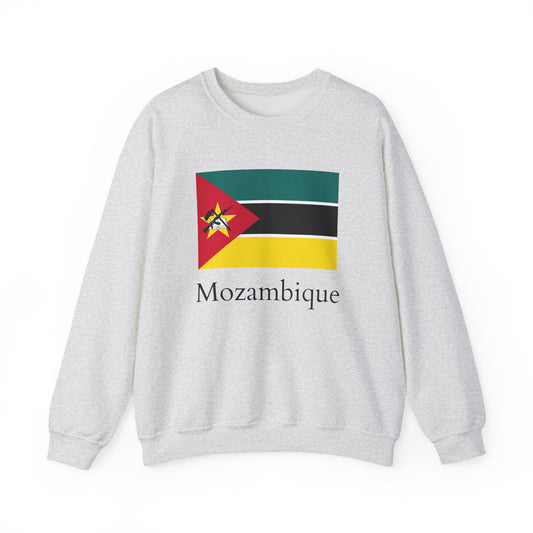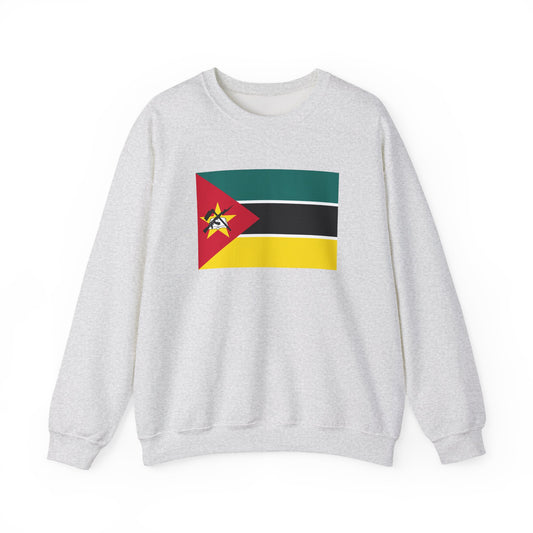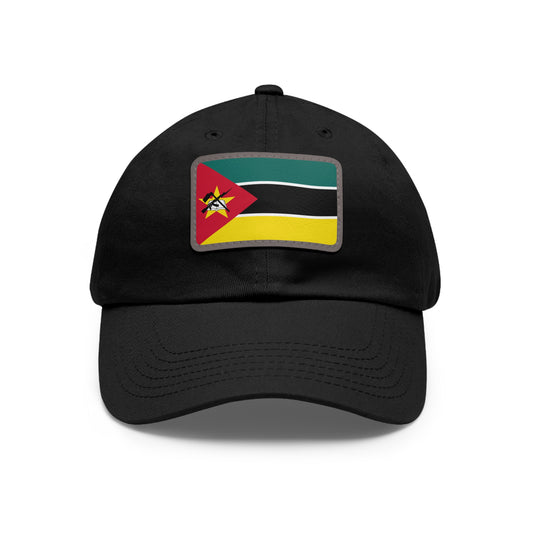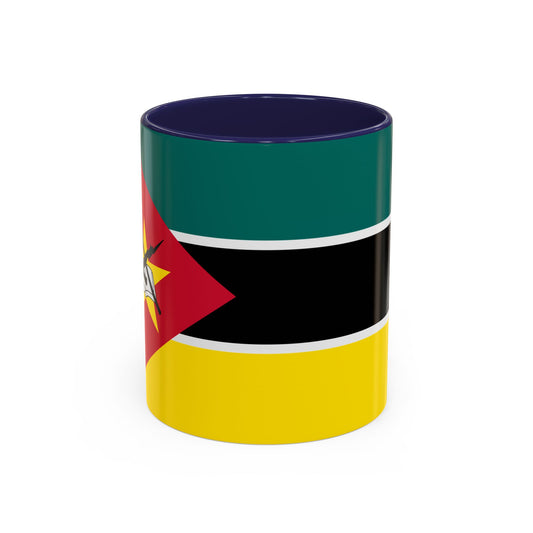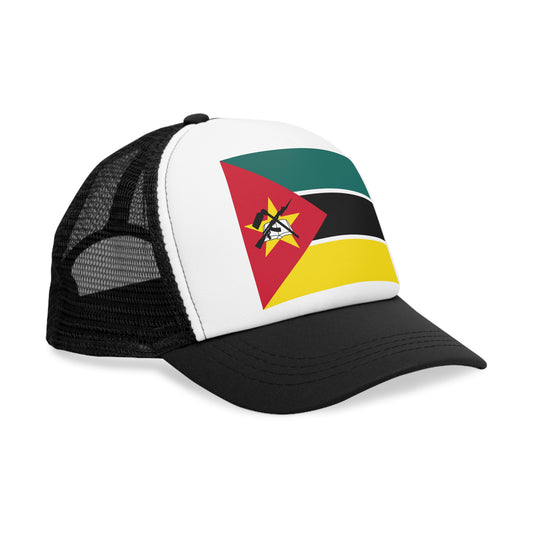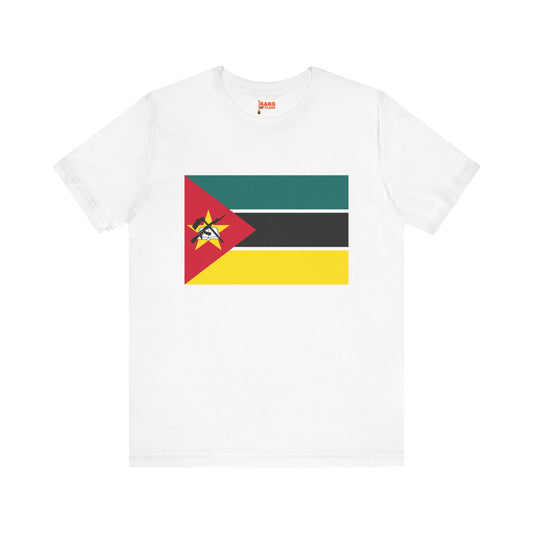-
Mozambique Sweatshirt
Regular price $34.15 USDRegular priceUnit price / per -
Mozambique Flag Sweatshirt
Regular price $34.15 USDRegular priceUnit price / per -
Mozambique Pillow
Regular price $22.65 USDRegular priceUnit price / per -
Mozambique Backpack
Regular price $59.79 USDRegular priceUnit price / per -
Mozambique Leather Patch Hat
Regular price $18.85 USDRegular priceUnit price / per -
Mozambique Mug
Regular price $11.65 USDRegular priceUnit price / per -
Mozambique Trucker Cap
Regular price $14.90 USDRegular priceUnit price / per -
Mozambique Hoodies
Regular price $34.40 USDRegular priceUnit price / per -
Mozambique T-shirts
Regular price $22.79 USDRegular priceUnit price / per -
Mozambique Flag Hoodies
Regular price $34.40 USDRegular priceUnit price / per -
Mozambique Flag on T-shirt
Regular price $22.79 USDRegular priceUnit price / per
Collection: Mozambique
The Mozambique flag is a colorful and vibrant symbol of the nation's history and identity. From its unique design to its deep symbolism, the flag of Mozambique has played a significant role in the country's past and present. We will explore the flag's current relevance and unique protocols, delving into its design, historical context, symbolism, and more.
Overview of the Mozambique Flag

The Mozambique flag is distinguished by its horizontal tricolor arrangement of green, black, and yellow, each carrying significant symbolism. A striking red triangle is positioned at the hoist side, creating a vivid contrast. This triangle houses a detailed emblem: a yellow five-pointed star at the center. Superimposed on the star are a book, a hoe, and an AK-47 rifle, each crossing over a cogwheel. The choice of colors and symbols is deliberate, with green emphasizing the nation’s rich agriculture. The black stripe is a nod to Africa, highlighting Mozambique's geographical and cultural placement within the continent—yellow highlights the country’s vast mineral resources, symbolizing wealth and prosperity. The bold red of the triangle is a powerful reminder of the struggle and sacrifices made for Mozambique's independence. Each element of the design interplays to narrate the story of Mozambique’s past, values, and aspirations, encapsulating its people's spirit and resilience.
Historical Context of the Mozambique Flag

Adopted on May 1, 1983, the flag of Mozambique emerged after the nation's independence from Portugal, which was officially recognized in 1975. This pivotal moment marked the end of colonial rule and the beginning of a new chapter in Mozambique's history. The flag's design draws direct inspiration from the Mozambique Liberation Front (FRELIMO) banner, the revolutionary movement that played a central role in securing the country's independence.
FRELIMO's flag symbolized resistance and the fight against colonial oppression, laying the groundwork for the current national flag's symbolism and design elements. The transition from the colonial flag to the present Mozambique flag reflects a broader shift towards national sovereignty, self-determination, and establishing a distinct Mozambican identity. This change was not merely cosmetic but represented a profound break from the past and a commitment to forging a new, independent future.
Symbolism Embedded in the Mozambique Flag
The intricate symbolism of the Mozambique flag weaves together a narrative of resilience, aspiration, and unity. A book, hoe, and AK-47 rifle intersect over a cogwheel at the heart of the flag's emblem, each element carrying deep meaning. The book is a powerful emblem of the importance of education and the pursuit of knowledge for all Mozambicans, seen as vital for the country’s progress. The hoe, a simple yet fundamental agricultural tool, underscores the central role of agriculture and rural development in Mozambique's economy and people’s livelihoods. It speaks to the value of hard work in cultivating the land and sustaining the nation.
Perhaps the most discussed symbol, the AK-47 rifle, represents the determination and sacrifice in Mozambique’s fight for independence. This inclusion is a direct nod to the struggles and resilience of the Mozambican people in their quest for sovereignty against colonial rule. The cogwheel beneath these symbols symbolizes the industrial sector and the workers' contributions to building the nation's economy, highlighting the importance of unity between different sectors of society for national progress. Lastly, the encompassing star shines as a beacon of hope and solidarity with the international community, suggesting that Mozambique's journey and struggles are part of a larger global narrative of striving for freedom and justice.
Current Relevance of the Mozambique Flag
Today, the Mozambique flag is integral to the nation's life. It is a common sight at various significant events, from Independence Day celebrations and state functions to military honors and public ceremonies, where it symbolizes national coherence and the collective memory of the populace. This emblem of sovereignty is a fixture in governmental settings and in the hearts of Mozambicans, instilling a sense of pride and belonging. On the global stage, it represents Mozambique in diplomatic missions, international sports competitions, and global conferences, serving as a visual ambassador of the country's heritage and aspirations.
In recent years, the presence of the AK-47 rifle on the flag has sparked debate, reflecting evolving perspectives on symbols of conflict and peace. This discussion opens avenues for national dialogue on the flag’s contemporary significance and the values Mozambicans wish to embody. Despite these debates, the flag remains a powerful unifier, especially in times of national achievement or challenge, rallying the populace around shared goals and a common identity. Its usage in today’s Mozambique underscores the enduring relevance of the flag's symbolism, linking past struggles with present and future aspirations and highlighting the ongoing journey of nation-building and self-determination.
Additional Facts and Unique Protocols
When it comes to the respectful display of the Mozambique flag, established conventions must be adhered to to ensure its dignity is preserved. A fundamental rule is that the flag must not be allowed to fall or rest on the ground, symbolizing the nation's sovereignty and respect for its symbols. In ceremonies involving the raising or lowering the flag, these actions are performed deliberately and ceremoniously, reflecting gravity and respecting the flag's commands.
Additionally, the proper orientation is critical, with the distinctive red triangle always positioned at the hoist side to maintain the correct symbolism and alignment. Interestingly, the design process behind this emblematic flag was not solely an artistic endeavor but included the insight and direction of Samora Machel, Mozambique's first president. This illustrates the close ties between the nation's leadership and its visual symbols. These protocols and the story of the flag’s creation highlight Mozambique's deep respect for its national flag and its values.


